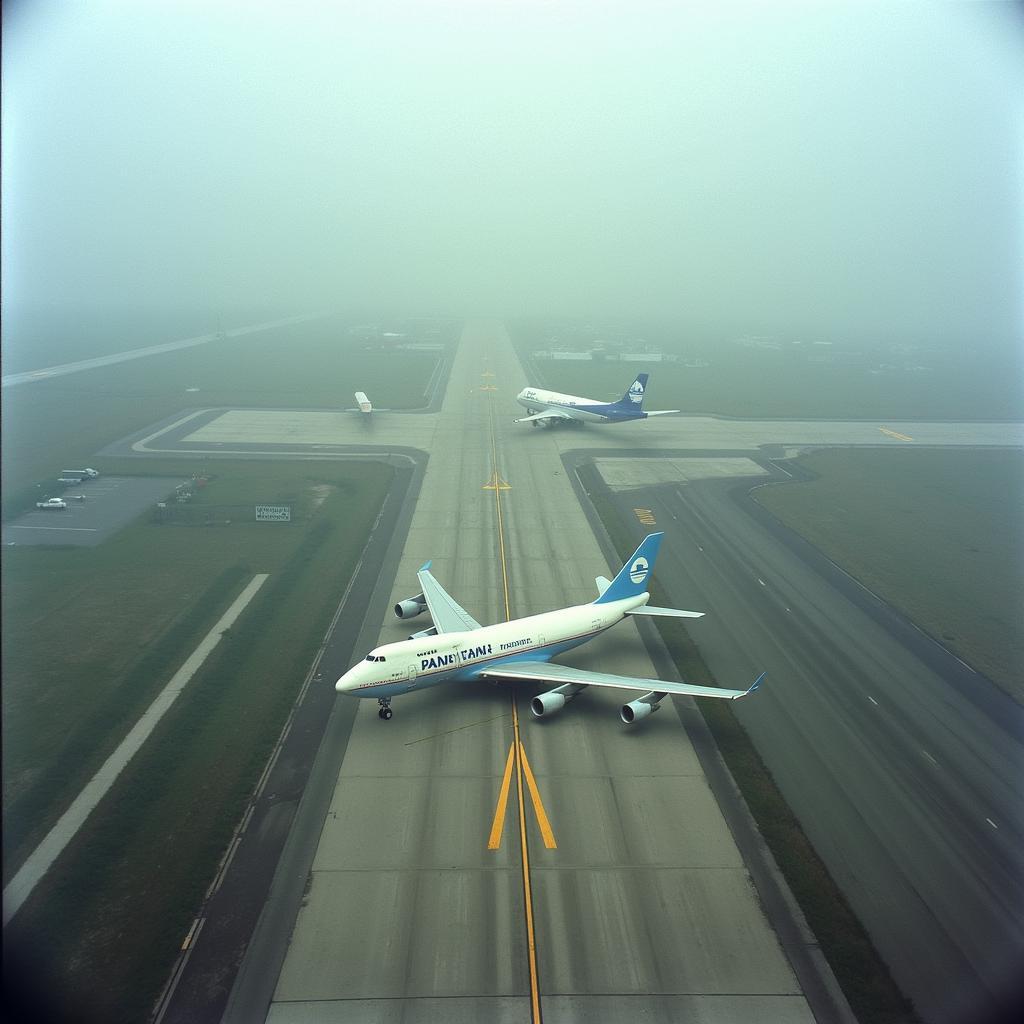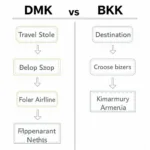The 1977 Tenerife Airport Disaster remains the deadliest accident in aviation history. On March 27, 1977, two Boeing 747s collided on the runway of Los Rodeos Airport (now Tenerife North Airport), resulting in the loss of 583 lives. This tragedy shocked the world and led to significant changes in aviation safety protocols.
The Chain of Events Leading to Disaster
Several factors contributed to the Tenerife airport disaster. A bomb threat at Gran Canaria Airport, the destination for both aircraft, forced them to divert to Los Rodeos, a smaller airport ill-equipped to handle such large planes. The resulting congestion on the runway and taxiways, combined with thick fog that severely limited visibility, created a dangerous situation. Miscommunication between the KLM crew and the air traffic control tower played a crucial role.
Miscommunication and Confusion on the Runway
The KLM flight, eager to depart for Gran Canaria once it reopened, requested permission to backtaxi on the runway. Air traffic control granted permission, but the thick fog made it difficult for the KLM crew to determine their exact position. Simultaneously, the Pan Am flight was still backtaxiing on the same runway, attempting to find its designated exit. The two aircraft were unknowingly on a collision course.
 Tenerife Airport Disaster: Runway Confusion and Fog
Tenerife Airport Disaster: Runway Confusion and Fog
The Devastating Collision and Aftermath
The KLM captain, believing he had clearance for takeoff, initiated the takeoff roll. However, the Pan Am aircraft was still on the runway. The KLM crew desperately attempted to lift off, but it was too late. The KLM aircraft struck the Pan Am 747, resulting in a catastrophic explosion and fire. Tragically, all 248 passengers and crew aboard the KLM flight perished. On the Pan Am flight, 335 passengers and crew lost their lives, while 61 survived.
How the Tenerife Airport Disaster Changed Aviation Safety
The Tenerife airport disaster prompted a sweeping review of aviation safety procedures. One of the most significant changes was the standardized use of phraseology in air traffic control communications. This aimed to eliminate ambiguity and ensure clear and concise communication between pilots and controllers. Ground radar systems were also improved, allowing controllers to track aircraft movements on the ground, even in low visibility conditions.
What were the key contributing factors to the 1977 Tenerife airport disaster?
Limited visibility due to dense fog, runway congestion, and miscommunication between the KLM crew and air traffic control were the key factors contributing to the collision.
Remembering the Victims and Lessons Learned
The 1977 Tenerife Airport Disaster serves as a somber reminder of the importance of stringent safety protocols in aviation. The tragedy led to critical improvements in communication, technology, and procedures, making air travel significantly safer. The lessons learned from this devastating event continue to shape the aviation industry today, ensuring that such a catastrophe is never repeated.
Conclusion
The 1977 Tenerife airport disaster remains a pivotal moment in aviation history. This tragic event, caused by a confluence of factors, including fog, runway congestion, and miscommunication, resulted in the greatest loss of life in a single aviation accident. The disaster spurred crucial changes in air traffic control procedures and technology, ultimately making air travel safer. The legacy of the 1977 Tenerife Airport Disaster serves as a constant reminder of the importance of vigilance and continuous improvement in aviation safety.
FAQ
- What caused the planes to divert to Tenerife? A bomb threat at Gran Canaria Airport forced the flights to divert to Los Rodeos.
- Why was visibility so poor? Thick fog significantly reduced visibility on the runway.
- What type of aircraft were involved? Two Boeing 747s, one operated by KLM and the other by Pan Am.
- What were the major changes after the disaster? Standardized phraseology in air traffic control and improved ground radar systems.
- How many people died in the Tenerife airport disaster? 583 people lost their lives.
- Where can I learn more about the victims? Several online resources and documentaries offer further information about the victims and their stories.
- What is the current name of Los Rodeos Airport? It is now known as Tenerife North Airport.
Need more information? Please contact us at Phone: +13089626264, Email: [email protected] or visit us at 404 Bothwell St, Oxford, NE 68967, USA. Our customer service team is available 24/7.

